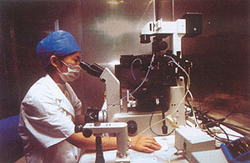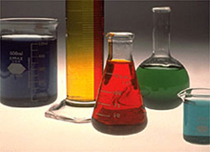TCM Research: Present and Future
TCM Theory
 Traditional Chinese Medicine (TCM) is a term commonly given to a range of traditional medical practices carried out in China that have developed over several thousand years. Nowadays, medicinal herbs, including minerals and animal compounds used in Chinese medicine, are being accepted in greater numbers by the general public. An increasing number of academics and industrial scientists are studying them extensively, while more proprietary Chinese medicines are being manufactured by different countries. Traditional Chinese Medicine (TCM) is a term commonly given to a range of traditional medical practices carried out in China that have developed over several thousand years. Nowadays, medicinal herbs, including minerals and animal compounds used in Chinese medicine, are being accepted in greater numbers by the general public. An increasing number of academics and industrial scientists are studying them extensively, while more proprietary Chinese medicines are being manufactured by different countries.
While a chemically-derived drug can address only a single problem, herbal medicine is able to address several problems simultaneously. A herbal medicine consists of various constituents, and its pharmacological action can be due to a particular chemical present in it or the complex interactions between the constituents.
The biggest advantage of herbal medicine is that it is obtained from plants; its organic nature makes it compatible with our bodyˇ¦s chemistry. It is thus more effective with few toxic side effects. Herbal medicine is thus in compliance with the basic principle of naturopathic medicine: the healing power of nature.
Current Research Development
In western countries, herbal medicines have become more popular amongst both the public and scientific communities. With this increasing popularity comes the need to competently monitor and scientifically research various aspects of these medicines using modern analytical and chemical techniques to provide qualitative and quantitative analyses, in order to guarantee its safety and efficacy. Such actions serve to maintain quality control and provide botanical, chemical, manufacturing and biological assurance.
In the United States, herbal medicines are regarded as dietary supplements. Pharmaceutical companies have recognized the value of traditional Chinese medicine and are employing teams of scientists to gather knowledge from traditional herbalists and medicine practitioners. The United States National Institutes of Health established the National Center for Complementary and Alternative Medicine in 1999. With a budget of $US 50 million1, this center is dedicated to exploring complementary and alternative healing practices, including TCM, in the context of rigorous scientific testing, the training of complementary and alternative medicine researchers, and disseminating authoritative information to public and professionals alike.
Modern technologies being used or under development for the quality control of TCM include a wide range of analytical techniques used in western pharmaceutical research such as microscopic analysis, chromatographic methods, mass spectrometry, DNA sequencing methods and bioassays.2 Such modernization is important to the standardization of TCM and the establishment of qualitative and quantitative data on its active ingredients and bioactivity. In addition, evaluation of toxicity and side effects of TCM, and clinical tests such as double-blind clinical trials are conducted to ensure its safety and efficacy.3 Modern analytical and pharmacological methods are currently used to determine the properties of herbal combinations in comparison with their single component.
Role and Future Development
 Traditional herbs have been the major sources of many modern single-drug developments. In current drug development, a herb or herbal formulation from folk remedies or clinics is investigated. Then extraction of the target herbal medicine results in a promising new active natural product or their synthetic analogues through verified pharmacological testing and bioactivity-directed fractionation and isolation of active ingredients.4 The active ingredients of the target drug are then used for the next stage of its development. In this stage, toxicity and efficacy are determined. Clinical trials are the ultimate goal of these preclinical steps. Traditional herbs have been the major sources of many modern single-drug developments. In current drug development, a herb or herbal formulation from folk remedies or clinics is investigated. Then extraction of the target herbal medicine results in a promising new active natural product or their synthetic analogues through verified pharmacological testing and bioactivity-directed fractionation and isolation of active ingredients.4 The active ingredients of the target drug are then used for the next stage of its development. In this stage, toxicity and efficacy are determined. Clinical trials are the ultimate goal of these preclinical steps.
While western medicine currently employs pure, single compounds to address human diseases, TCM has long used multiple combinations of medicinal herbs to treat and relieve the symptoms of many different diseases. It is more attractive to consumers as TCM may have fewer and less severe side effects than single pure drugs. Therefore, the multi-component and synergistic nature of TCM should not be ignored in pharmaceutical development. In order to continue the legacy of Chinese medicine, TCM research must continue to identify and improve the efficacy of herbal active principals both singly and in combination from active ingredients, active fractions, and active prescriptions of herbal formulations .
References:
| 1. |
Jonas WB. Alternative Medicine - learning from the past, examining the present, advancing to the future. JAMA 1998; 280: 1616-1618. |
| 2. |
Hsien TC, et al. Effects of Coriolus Versicolor (I'm Yunity) on Cell-Cycle Progression and Expression of Interleukins-1s -6, and -8 in Promyelocytic HL-60 Leukemic Cells and Mitogenically Stimulated and Nonstimulated Human Lymphocytes. J Altern Complem Med 2002; 8: 591-602. |
| 3. |
Tsang KW, et al. Coriolus Versicolor Polysaccharide Peptide slows progression of advanced non-small cell lung cancer. Resp Med 1997; 97: 618-624. |
| 4. |
Lee KH, et al. Research and future trends in the pharmaceutical development of medicinal herbs from Chinese medicine. Public Health Nutr 2000; 3(4A): 515-522. |
Compiled and edited by:
Jennifer Eagleton, BA, MA (Asian Studies), Integrated Chinese Medicine Holdings Ltd.
Stan Man, Integrated Chinese Medicine Holdings Ltd.
For print version
|